Related Research Articles
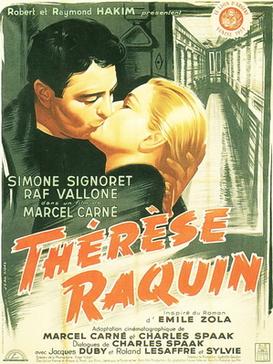
Thérèse Raquin is a 1953 French-Italian drama film directed by Marcel Carné and starring Simone Signoret, Raf Vallone and Jacques Duby. The story is loosely based on the 1867 novel of the same title by Émile Zola but with the setting updated to 1953. It was shot at the Neuilly Studios in Paris and on location in Lyon. The film's sets were designed by the art director Paul Bertrand. It was screened at the 14th Venice International Film Festival where it won the Silver Lion.

Ciboulette is a 1933 French musical film directed by Claude Autant-Lara and starring Simone Berriau, Robert Burnier and Armand Dranem. It is an adaptation of the 1923 operetta of the same name. The film's art direction was by Lazare Meerson and Alexandre Trauner. It was part of a popular cycle of operetta films during the decade.

Samson is 1936 French drama film directed by Maurice Tourneur and starring Harry Baur, Gaby Morlay and André Lefaur. It was based on the 1908 play of the same title by Henri Bernstein, which had previously been made into three silent films. The film was shot at the Joinville Studios in Paris, with sets designed by the art director Guy de Gastyne.

The Eaglet is a 1931 French historical drama film directed by Viktor Tourjansky and starring Jean Weber, Victor Francen, and Henri Desfontaines. It is an adaptation of the play L'Aiglon by Edmond Rostand, which portrays the life of Napoleon II. It was shot at the Joinville Studios in Paris. The film's sets were designed by the art director Serge Piménoff.
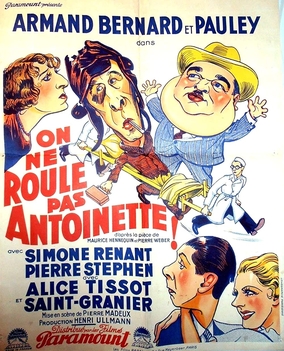
You Can't Fool Antoinette is a 1936 French comedy film directed by Paul Madeux and starring Armand Bernard, Paul Pauley and Simone Renant. The film's sets were designed by the art directors Henri Ménessier and René Renoux.

Odette is a 1928 German silent drama film based upon the play by Victorien Sardou, directed by Luitz-Morat, and starring Francesca Bertini, Warwick Ward, and Simone Vaudry. Bertini would star in two other adaptations of the play, Odette (1916) and Odette (1934).
Simone is a 1926 French silent drama film directed by Donatien and starring Lucienne Legrand, Jeanne Kervich and Jean Dehelly. It is based on a play by Eugène Brieux, which had previously been adapted for the big screen in a 1918 silent film of the same name.
The Ladies in the Green Hats is a 1929 French silent comedy film directed by André Berthomieu and starring Gabrielle Fontan, René Lefèvre and Alice Tissot. It is based on the novel of the same name by Germaine Acremant.
When Do You Commit Suicide? is a 1931 American pre-Code comedy film directed by Roger Capellani and starring Robert Burnier, Noël-Noël, and Simone Vaudry. It was made at Joinville Studios by the French subsidiary of Paramount Pictures. A separate Spanish-language version was made at Joinville the following year. In 1953 the film was remade again in French.
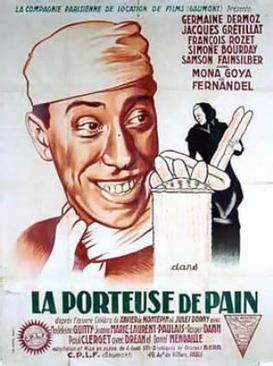
The Bread Peddler is a 1934 French drama film directed by René Sti and starring Germaine Dermoz, Jacques Grétillat and Simone Bourday. It is based on Xavier de Montépin's novel of the same title.
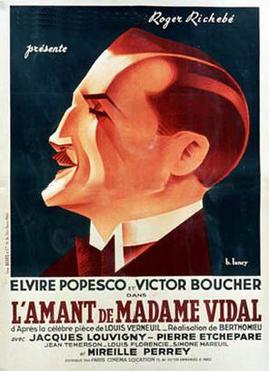
The Lover of Madame Vidal is a 1936 French comedy film directed by André Berthomieu and starring Elvire Popesco, Victor Boucher and Jacques Louvigny. It was based on a 1928 play of the same name by Louis Verneuil. The film's sets were designed by the art director Jean d'Eaubonne.

A Double Life or Double Destiny is a 1954 French-West German drama film based upon the play by Jean Giraudoux, directed by Victor Vicas and starring Michel Auclair, Simone Simon and Barbara Rütting. It was shot at the Wiesbaden Studios in Hesse and on location around Paris and Kiedrich in the Rhineland. The film's sets were designed by the art directors Alfred Bütow and Ernst Schomer.
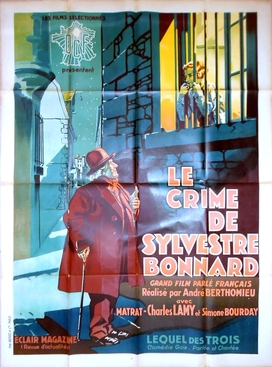
The Crime of Sylvestre Bonnard is a 1929 French silent drama film directed by André Berthomieu and starring Émile Matrat, Thérèse Kolb and Gina Barbieri. It is based on the 1881 novel The Crime of Sylvestre Bonnard by Anatole France.
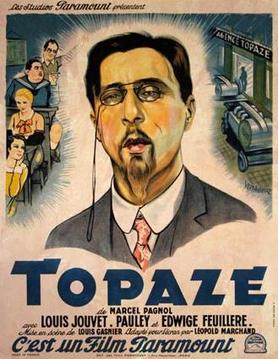
Topaze is a 1933 French comedy film directed by Louis J. Gasnier and starring Louis Jouvet, Simone Héliard and Marcel Vallée. It is based on the 1928 play Topaze by Marcel Pagnol. The same year, an American version of the play Topaze was released, starring John Barrymore. In 1936, Pagnol himself remade the film in France.

Behold Beatrice or Beatrice's Temptation is a 1944 French drama film directed by Jean de Marguenat and starring Fernand Ledoux, Jules Berry and Renée Faure. It features an early performance by the future star Simone Signoret. It was shot at the Victorine Studios in the southern French city of Nice. The film's sets were designed by the art director Georges Wakhévitch.

The Ostrich Has Two Eggs is a 1957 French comedy film directed by Denys de La Patellière and starring Pierre Fresnay, Simone Renant and Georges Poujouly. It was based on a play by André Roussin.

The Lord's Vineyard is a 1958 French comedy film directed by Jean Boyer and starring Fernandel, Pierre Dux and Simone Valère. The title is a traditional expression for drunkenness in French. It is based on a play by Francis de Croisset and Robert de Flers, which had previously been adapted into a 1932 film.

A Kiss for a Killer is a 1957 French drama mystery film directed by Henri Verneuil and starring Henri Vidal, Mylène Demongeot and Isa Miranda. It is based on the 1954 novel The Sucker Punch by James Hadley Chase.

The Triumph of Michael Strogoff is a 1961 French-Italian historical adventure film directed by Viktor Tourjansky and starring Curd Jürgens, Capucine and Claude Titre. It is inspired by the 1876 novel Michael Strogoff by Jules Verne. Jürgens had previously played the role in the 1956 film Michel Strogoff.

Quay of Grenelle is a 1950 French crime drama film directed by Emil-Edwin Reinert and starring Henri Vidal, Maria Mauban and Françoise Arnoul. It was shot at the Billancourt Studios in Paris. The film's sets were designed by the art director Lucien Aguettand. The film takes its title from a Paris street of the same name.
References
- ↑ Goble p.954